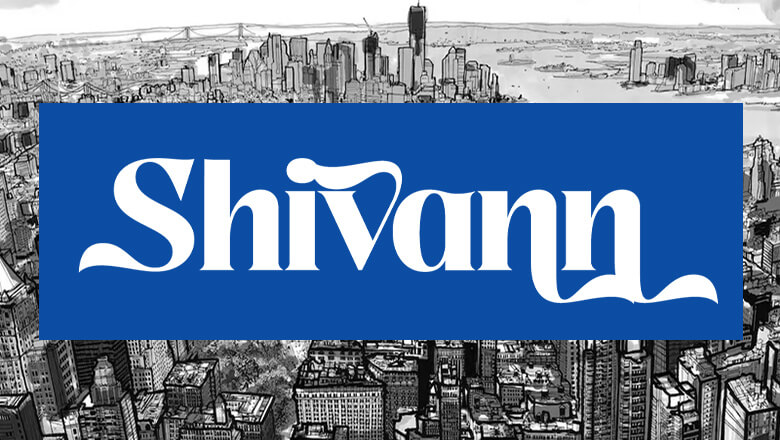
views
What flag is blue and yellow?
There are several blue and yellow flags, including the flag of Ukraine. Ukraine, an Eastern European country, has a flag that’s half-blue and half-yellow, with a horizontal blue stripe at the top and a yellow one at the bottom. Of course, there are other countries around the world (as well as states and cities) with blue and yellow flags as well, including Sweden, Palau, and the European Union. Ukraine’s flag has become more prominent since the Russian invasion in 2022, serving as a symbol of national pride, unity, and resistance.
About the Ukrainian Flag & Its History
The Ukrainian flag is symbolic of the country’s landscape. Ukraine has vast amounts of agricultural land, and the flag—with its blue stripe on top and yellow stripe below—represents “blue skies over golden wheat fields.” However, the Ukrainian flag’s colors were originally based on the city of Lviv’s coat of arms (a golden lion on a blue shield). Lviv is a city in western Ukraine, near the border with Poland. Its gold and blue coat of arms dates back to the 13th-century reign of Prince Danylo Romanovych.
The yellow and blue Ukrainian flag was designed in 1848. It was first used by the Supreme Ruthenian Council (a Ukrainian political organization from Lviv, which was part of the Austrian Empire at the time). When Ukraine gained its independence in 1918, the flag became its national symbol, and the flag’s stripes were switched to their current position, reflecting the sky and wheat fields below (having originally been yellow over blue). During the Soviet era, the blue and yellow national flag of Ukraine was heavily restricted, though many Ukrainians held onto it nonetheless. Ukrainian independence was regained in 1991, and the blue and yellow flag was restored as well. In 1992, it became the official flag of Ukraine.
The Ukrainian flag has become widespread due to the Russian invasion. Since the invasion’s start, the Ukrainian flag has become a symbol of hope, resistance, and national pride for the Ukrainian people—and a symbol used globally by people to advocate for Ukraine and show their support for the country in its struggle against the invasion. This is why “blue and yellow flag” most often refers to the Ukrainian flag nowadays. For example, you might see people use the Ukrainian flag emoji (????????) online to express support for Ukraine, or Ukrainian refugees displaced by the invasion. Nonetheless, Ukraine isn’t the only country with a blue and yellow flag. Check out the other flags below!
More European Flags with Blue & Yellow
Sweden Besides Ukraine, the other widely-known blue and yellow flag is Sweden’s, which consists of a yellow Nordic cross on a blue background. Blue and yellow have been considered traditional Swedish colors for centuries, although the exact age of the Swedish flag’s design is unknown. The cross is symbolic of Christianity, while the colors reflect those on the Swedish coat of arms. Blue represents loyalty, justice, perseverance, vigilance, and truth; yellow represents generosity. The current Swedish flag was officially adopted in 1905, but the first instance of a yellow cross on a blue background dates all the way back to the 16th century! Sweden’s national coat of arms consists of three yellow crowns in a triangular formation over a blue shield.
The European Union The European Union flag is also known as the Flag of Europe. It consists of a blue background and a circle of twelve yellow stars, arranged to represent unity and solidarity among the people of Europe. However, the number twelve doesn’t correspond to the number of countries in the European Union; rather, the number twelve is a symbol of perfection and entirety. Countries in the European Union are: Austria, Belgium, Bulgaria, Croatia, Cyprus, the Czech Republic, Denmark, Estonia, Finland, France, Germany, Greece, Hungary, Ireland, Italy, Latvia, Lithuania, Luxembourg, Malta, the Netherlands, Poland, Portugal, Romania, Slovakia, Slovenia, Spain, and Sweden. There are also specific cities in the countries of Poland and Spain with blue and yellow flags—Opole, Poland, and Asturias, Spain.
Bosnia and Herzegovina Technically, Bosnia-Herzegovina’s flag has white, too—but, for the sake of being thorough, we’ll cover it here! The national flag of Bosnia and Herzegovina consists of a blue field with a yellow right triangle separating the field into two parts. Seven full white stars (and two half-stars) are arranged in a line along the diagonal side of the triangle. The points of the yellow triangle stand for the three main peoples of Bosnia and Herzegovina: the Bosniaks, Croats, and Serbs. The triangle itself represents the vague shape of the Bosnia-Herzegovina territory. The white stars represent Europe; they’re cut off on the ends because they’re supposed to be infinite, continuing past the edges of the flag. The flag’s colors (blue, yellow, and white) are associated with Bosnian culture, as well as the European Union flag and the ideals of peace and neutrality.
States in the U.S. with Blue & Yellow Flags
Alaska Every state in the US has its own flag (in addition to the national flag of the United States), and Alaska’s is blue and yellow. Specifically, its design consists of a deep blue background and eight yellow stars, arranged to form the Big Dipper constellation and Polaris (the North Star). The Big Dipper and Polaris were traditionally used to navigate by finding true north. Additionally, the Big Dipper is part of the Ursa Major constellation, which symbolizes a bear, and bears are, famously, indigenous to Alaska (even if the state animal is actually a moose).
Indiana Indiana’s blue and yellow flag features a dark blue background and a yellow torch, surrounded by 19 yellow stars. Thirteen of those stars form an outer circle, representing the original 13 colonies that made up the US. Then, the five stars forming a half-circle around the bottom of the torch represent the other states that joined the Union before Indiana. Finally, the 19th star atop the torch represents the state of Indiana itself. Additionally, the yellow torch represents liberty.
Oregon Oregon’s flag is special—it’s the only US state flag to have two sides! On one side is a blue background with “State of Oregon” and “1859” (the year it gained statehood), along with the state seal: an eagle, a wagon, the Pacific Ocean, and 33 stars. On the other side is a blue background with a yellow beaver. The 33 stars on the front of the flag represent Oregon’s status as the US’s 33rd state. The beaver is Oregon’s state animal! Interestingly, Oregon shares a state animal with New York.
Other Blue & Yellow Flags Around the World
Palau Palau, or the Republic of Palau, is an island country in the western Pacific Ocean. Its flag features a simple light blue background (symbolizing the ocean waters surrounding the island) and a yellow circle in the middle (symbolizing the full moon). Traditionally, the moon was a significant part of Palauan culture, which is why it’s featured on the national flag.
Kazakhstan Kazakhstan is a country in central Asia, and its lovely turquoise flag was adopted on June 4, 1992. Over the turquoise background, the flag features a yellow sun with 32 rays, a yellow steppe eagle, and the “koshkar-muiz” (a national ornament pattern). The turquoise represents the unity of the Kazakh people, with the sun and eagle representing freedom, power, and flight to the future.
Which flags are blue, yellow, and red?
Andorra Andorra is a tiny European country nestled in the Pyrenees mountains, between France and Spain. Its national flag features three vertical stripes in blue, yellow, and red (in that order), with its coat of arms in the center. Andorra’s coat of arms bears the motto “Virtus Unita Fortior (“united virtue is stronger”) along with a mosaic of the Bishop of Urgell and the Counts of Foix. Andorra’s flag is a symbol of the nation’s sovereignty and long history, as well as its close ties to its neighboring countries.
Chad Chad (officially the Republic of Chad) is a country in central Africa, bordered by Libya, Sudan, Cameroon, Nigeria, and Niger. Its flag was established when Chad gained independence in 1959; it features three vertical stripes of dark blue, yellow-gold, and red. The flag’s colors represent the sky and hope (blue), the sun and the Saharan desert (yellow) and the blood shed for freedom (red). Chad’s flag also reflects France’s tricolor (as it was formerly conquered by France), but with Pan-African colors rather than French ones. Chad’s flag is also very similar to Romania’s, with the only difference being the shade of blue used.
Colombia Colombia’s national flag features three horizontal bands of yellow (top), blue (middle), and red (bottom), with the yellow band being larger and taking up the entire top half of the flag. That yellow symbolizes Colombia’s bountiful resources, as well as its sovereignty; meanwhile, the blue represents freedom (as well as the Pacific Ocean and Caribbean Sea), and the red represents valor, generosity, and blood spilled to gain independence. Colombia’s flag was designed by General Francisco de Miranda. It was made Colombia’s official flag in 1861.
Democratic Republic of the Congo The Democratic Republic of the Congo’s flag has evolved dramatically since the country gained independence in 1960. Today, its flag features a sky blue background (representing peace), a diagonal red stripe bordered by two yellow stripes (representing the blood of the country’s martyrs and valor of its people), and a yellow star (symbolizing hope and wealth). The current flag was actually reinstated in 2006! Before that, the country’s flag went through several different iterations, some with different colors.
Ecuador Ecuador’s flag has a similar base to Colombia’s—horizontal bands of yellow (representing fertile soil and natural resources), blue (representing the skies and ocean), and red (representing blood shed in the struggle for independence). The center of the flag also features the Ecuadorian coat of arms, made up of an Ecuadorian landscape and an Andean condor, to symbolize the nation’s protection. Ecuador’s flag colors are similar to those of Colombia because it was once part of Gran Colombia in the early 19th century.
Moldova Moldova is an Eastern European country that gained independence from the Soviet Union in 1990, and its national flag was adopted on November 6th of that year. Moldova’s flag features three vertical stripes of blue (representing liberty), yellow (representing agricultural lands), and red (representing valor and the fight for independence). Moldova’s coat of arms is in the middle: an eagle holding a cross, an olive branch, and a scepter. Moldova’s flag is very similar to Romania’s, reflecting their shared history (and the fact that Moldova was once part of Romania).
Mongolia Mongolia’s flag is vivid and distinct, with three vertical stripes (red on either side and blue in the middle) and Mongolia’s national emblem, the Soyombo symbol, in yellow. The Soyombo represents fire, sun, moon, earth, water, vigilance against enemies, and the freedom of the Mongolian people; it has survived many regimes and struggles over the years. The flag’s red stripes represent valor and the ability to thrive despite nature’s harshness. The flag’s blue stripe represents the blue skies of Mongolia.
Romania Romania’s flag consists of three vertical stripes: blue (representing the sky), yellow (representing the sun and prosperity), and red (representing courage and the bloodshed of those who fought for the country’s freedom). Altogether, the Romanian flag is a symbol of liberty, unity, and justice, adopted after the fall of communism in 1989. As mentioned above, this flag is very similar to Chad’s; however, Romania’s blue is a lighter shade than the blue on Chad’s flag. Although it was officially adopted in 1989, Romania’s flag dates back to the 1848 revolution, and its colors have been significant for even longer.
Venezuela Venezuela’s flag consists of three horizontal stripes, starting with yellow on top (representing wealth, the sun, and generosity), blue in the middle (representing the Caribbean sea and Venezuela’s beaches), and red on the bottom (representing the blood shed while fighting for independence from Spain). Additionally, the blue stripe features eight white stars, each representing one of the provinces that joined Venezuela’s movement for independence. This flag was also designed by Francisco de Miranda (just like Colombia’s).












Comments
0 comment